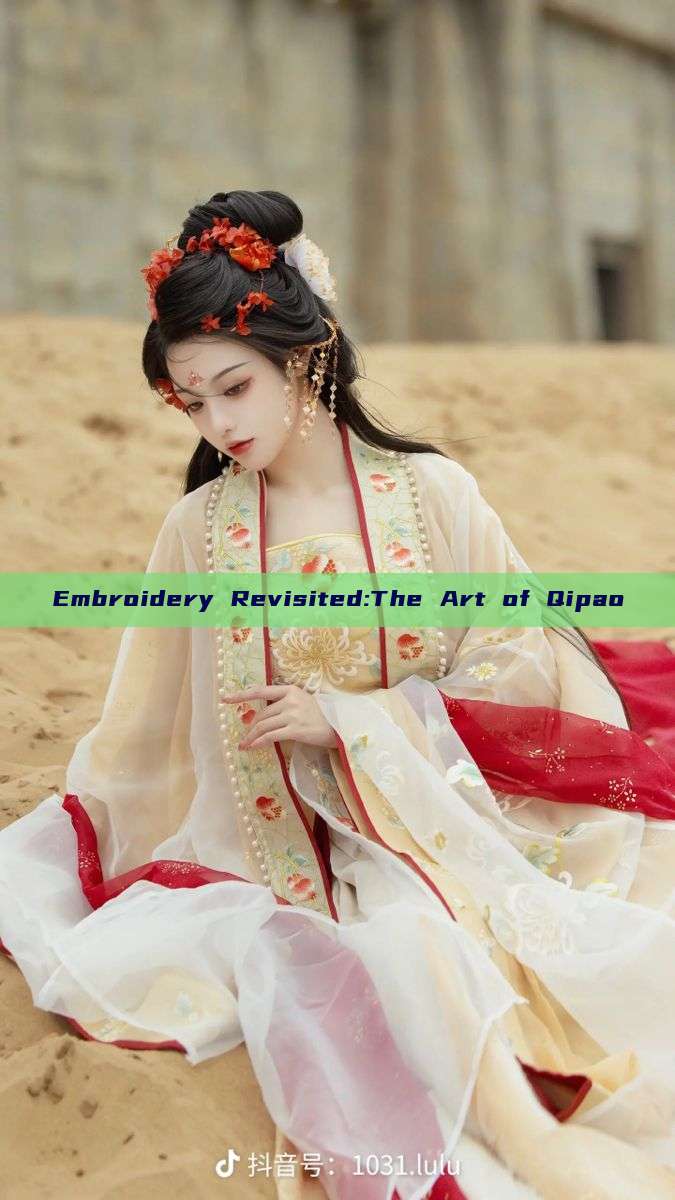In the realm of traditional Chinese clothing, the Qipao stands out as a unique symbol of elegance and cultural heritage. This article delves into the art of Qipao, paying homage to the skilled craftsmanship that goes into creating a masterpiece through embroidery.

The Qipao, also known as the cheongsam in Hong Kong and overseas, is a traditional Chinese women's dress that dates back to the early 20th century. It embodies the essence of Chinese culture and fashion, featuring intricate designs and patterns that reflect the beauty of Chinese embroidery.
Embroidery on Qipao has a long history and is an integral part of the garment's craftsmanship. The art of embroidery on Qipao involves intricate patterns and designs that are often symbolically meaningful. These patterns range from floral designs to animals and geometric shapes, each representing a different cultural significance.
The skilled craftsmanship behind embroidery on Qipao is remarkable. The process involves meticulous planning and execution, with each stitch carefully placed to create a seamless pattern. The use of different threads, colors, and techniques gives each Qipao its unique character and beauty.
In recent years, there has been a revival of interest in traditional Chinese clothing, and Qipao has become a popular choice for both traditional and modern occasions. The art of embroidery on Qipao has also been rediscovered by many, with designers and craftsman striving to revive this ancient craft.
The revival of Qipao has led to a surge in innovation, with designers exploring new ways to incorporate embroidery into their designs. From using modern materials to incorporating contemporary themes, designers are pushing the boundaries of traditional Qipao craftsmanship.
One such innovation is the use of digital technology in embroidery. Modern embroidery machines have made it possible to create intricate patterns and designs that were once only possible through skilled craftsmanship. This technology has opened up new avenues for designers to explore and create unique Qipao designs.
Another innovation in Qipao embroidery is the use of different materials and threads. Instead of using traditional silk threads, designers are now experimenting with different materials such as metal threads and beads to create a more modern and unique look. These new materials add texture and depth to the Qipao, making it more versatile and suitable for different occasions.
The art of embroidery on Qipao is not just about creating beautiful patterns; it is also about telling a story. Each pattern and design on a Qipao has a cultural significance that reflects the wearer's values and identity. By wearing a Qipao with intricate embroidery, the wearer is not just wearing a piece of clothing; they are also carrying a piece of their cultural heritage.
In conclusion, the art of embroidery on Qipao is a testament to the skilled craftsmanship and cultural heritage of China. As we revisit this art form, we not only appreciate its beauty but also recognize its importance in preserving our cultural identity. With the help of modern technology and innovation, we can continue to revive this ancient craft and pass it down to future generations.
The revival of Qipao and its embroidery is not just about fashion; it is also about reconnecting with our cultural roots. As we embrace this traditional craft, we also embrace the stories and values that have been passed down through generations. Through Qipao, we can continue to tell our stories and preserve our cultural heritage for future generations.
As we delve into the art of Qipao embroidery, we also recognize the importance of skilled craftsmanship. With the rise of technology, many traditional crafts are facing extinction. However, by supporting skilled craftsman and their work, we can ensure that these valuable skills are passed down to future generations.
In conclusion, the art of embroidery on Qipao is not just about creating beautiful clothing; it is about preserving our cultural heritage and ensuring that these valuable skills are not lost. As we revisit this ancient craft, let us appreciate its beauty, recognize its importance, and strive to revive it for future generations.






